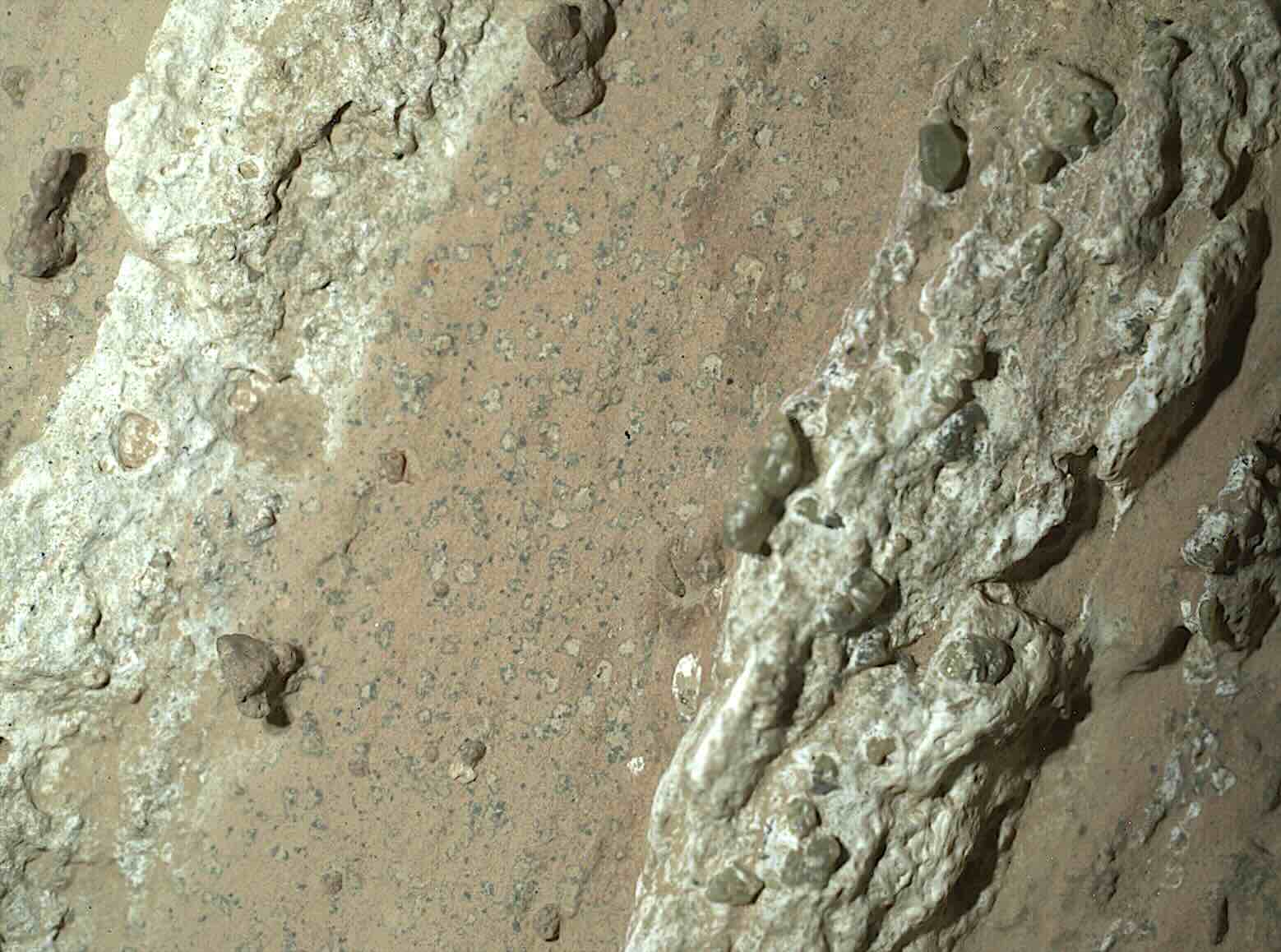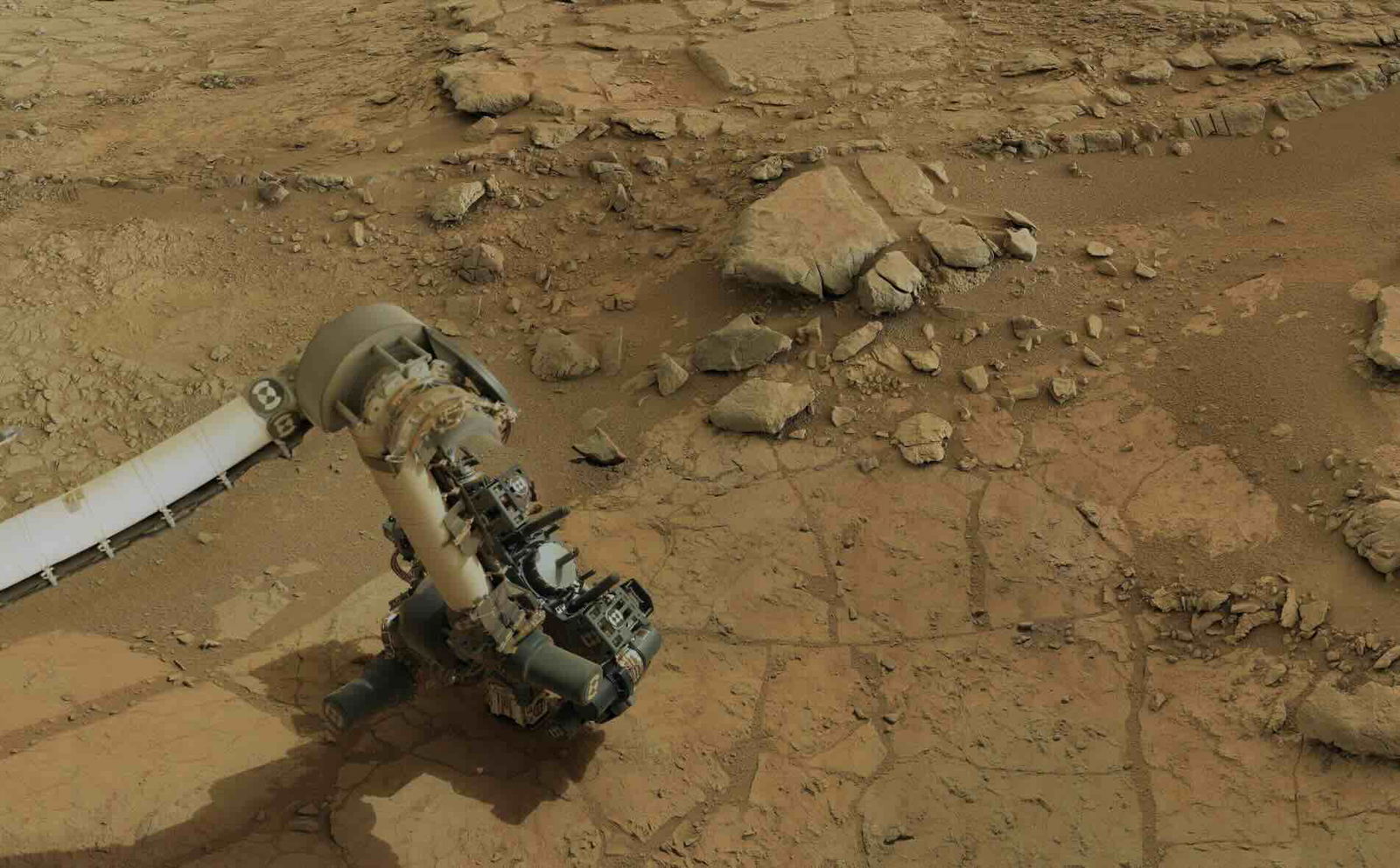NASA scientists are becoming more confident about the prospects for finding evidence for the existence of ancient life on Mars, following recent discoveries that represent scientific firsts for the Red Planet.
In July, the space agency announced that the Perseverance rover had recently discovered an unusual rock bearing qualities that have never been seen together in any single specimen observed on Mars, raising significant questions about whether it might boast key indicators of life.
Nicknamed “Cheyava Falls,” the rock exhibits several chemical signatures and other elements that are normally associated with the presence of microbial life, which experts think may likely have been present at a time billions of years ago when the Martian environment was home to liquid water.
Now, the discovery has scientists talking about a handful of unique qualities the unusual rock possesses that could one day help scientists determine whether life once existed on the Red Planet, answering one of humankind’s greatest questions about our place in the universe.
Here, we’ll take a quick look at several of the most intriguing characteristics about this unusual Martian stone, and why they have scientists so excited.
“Clear Evidence” of Water
Light colored veins that appear on the stone in recent photos are likely evidence of calcium sulfate, offering what Dr. Morgan Cable, a scientist on NASA’s Perseverance team who specializes in ‘weird’ life and prebiotic chemistry, calls “clear evidence that water once ran through the rock.”
Cable, a research scientist in the Laboratory Studies group at NASA’s Jet Propulsion Lab (JPL) in Pasadena, California, is the Science Lead for the Exobiology Extant Life Surveyor (EELS) concept and Co-Deputy PI of the Planetary Instrument for X-ray Lithochemistry (PIXL) Instrument aboard the Mars 2020 (Perseverance) rover.
In the past, additional evidence for the presence of water in the ancient Martian environment has been discovered, which includes channels that appear to have been formed by runoff from melting snow, as well as sedimentary deposits that may have been formed by ancient rivers, which were detected by NASA’s Mars Global Surveyor orbiter.
Valleys that appear to have been etched into the Martian environment by past flooding also seems to indicate the long-term presence of water on the planet long ago.
Red Means Organics
Cable also points to a reddish area in the central visible portion of the rock sample, which she says reveals evidence for the presence of organic compounds.


“In this reddish middle area, the rover’s SHERLOC instrument detected organic compounds,” Cable said in a recent video describing the most promising clues to the rock’s past.
The Scanning Habitable Environments with Raman & Luminescence for Organics and Chemicals (SHERLOC) instrument, which is mounted on Perseverance’s robotic arm features a pair of cameras and a laser spectrometer, enables it to probe stony samples the rover comes across within Jezero crater for possible signs of organic compounds. SHERLOC is also able to spot evidence of minerals that have been altered in the past while under exposure to watery environments, which could also indicate the past presence of microbial life.
Earlier this year, the rover’s SHERLOC instrument encountered trouble when a moveable lens used to protect its spectrometer and one of its cameras ended up be temporarily locked in place, preventing it from being used. After a six-month effort, the issue was finally resolved, allowing the instrument to be restored to normal functionality.
Chemical Reactions and Leopard Spots
Cable also points to features on the recent Martian discovery that she likens to “leopard spots,” which indicate the presence of chemical reactions associated with the stone.
These reactions “could have been an energy source for microbial life,” she adds.
“We’ve never seen these three things together on Mars before,” Cable said in a recent video detailing the aspects of the recent discovery that have her and so many other experts excited, adding that she and her colleagues “have lots of questions about how this rock formed, and whether it hosted microbial life billions of years ago.
Although perhaps not as exciting as the discovery of life forms existing on the Red Planet in the present day, knowing that life ever thrived on the planet at any time within the last several billion years would be an unprecedented discovery. Fundamentally, it would answer the question as to whether it is possible for life to exist beyond Earth.
“To fully understand what’s going on here, we need to get these rocks back to labs here on Earth,” Cable says. Currently, NASA plans on trying to return samples Perseverence has collected during its explorations of Mars by around 2040.
Discovering Evidence for Life on Mars
In April, NASA Administrator Bill Nelson said the Mars Sample Return mission would be “one of the most complex missions NASA has ever undertaken,” although adding that “a 2040 return date is too far away.”
“We need to look outside the box to find a way ahead that is both affordable and returns samples in a reasonable timeframe,” Nelson said.
For scientists like Cable, retrieving the latest samples obtained by Perseverence will be worth the wait.
“In the meantime, as the science community investigates this data, we’ve added a sample of this really compelling rock to Perseverence’s collection,” Cable said.
“We can’t wait to study it up close,” she added.
Micah Hanks is the Editor-in-Chief and Co-Founder of The Debrief. He can be reached by email at micah@thedebrief.org. Follow his work at micahhanks.com and on X: @MicahHanks.

